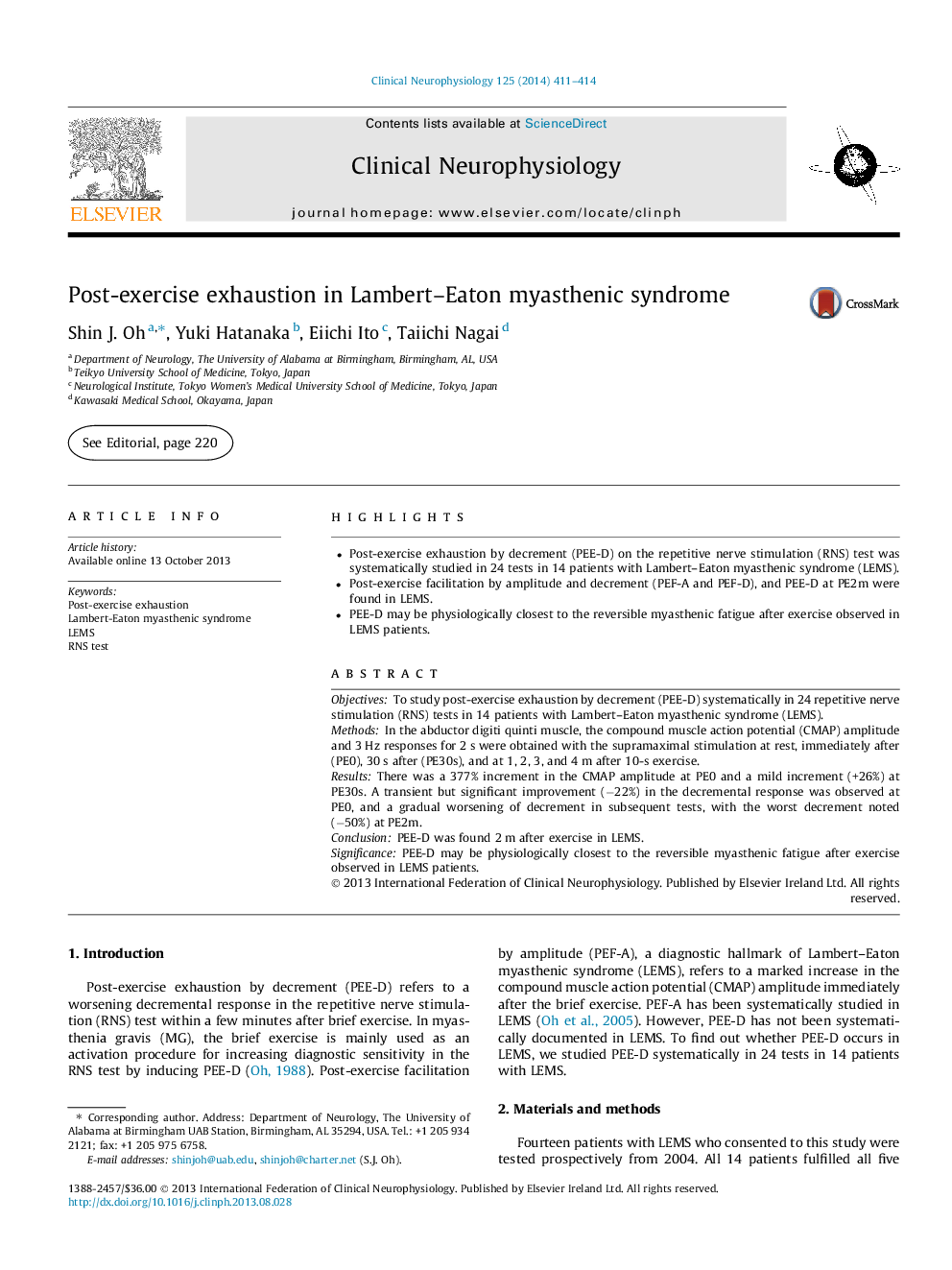| کد مقاله | کد نشریه | سال انتشار | مقاله انگلیسی | نسخه تمام متن |
|---|---|---|---|---|
| 3044412 | 1184999 | 2014 | 4 صفحه PDF | دانلود رایگان |

• Post-exercise exhaustion by decrement (PEE-D) on the repetitive nerve stimulation (RNS) test was systematically studied in 24 tests in 14 patients with Lambert–Eaton myasthenic syndrome (LEMS).
• Post-exercise facilitation by amplitude and decrement (PEF-A and PEF-D), and PEE-D at PE2m were found in LEMS.
• PEE-D may be physiologically closest to the reversible myasthenic fatigue after exercise observed in LEMS patients.
ObjectivesTo study post-exercise exhaustion by decrement (PEE-D) systematically in 24 repetitive nerve stimulation (RNS) tests in 14 patients with Lambert–Eaton myasthenic syndrome (LEMS).MethodsIn the abductor digiti quinti muscle, the compound muscle action potential (CMAP) amplitude and 3 Hz responses for 2 s were obtained with the supramaximal stimulation at rest, immediately after (PE0), 30 s after (PE30s), and at 1, 2, 3, and 4 m after 10-s exercise.ResultsThere was a 377% increment in the CMAP amplitude at PE0 and a mild increment (+26%) at PE30s. A transient but significant improvement (−22%) in the decremental response was observed at PE0, and a gradual worsening of decrement in subsequent tests, with the worst decrement noted (−50%) at PE2m.ConclusionPEE-D was found 2 m after exercise in LEMS.SignificancePEE-D may be physiologically closest to the reversible myasthenic fatigue after exercise observed in LEMS patients.
Journal: Clinical Neurophysiology - Volume 125, Issue 2, February 2014, Pages 411–414